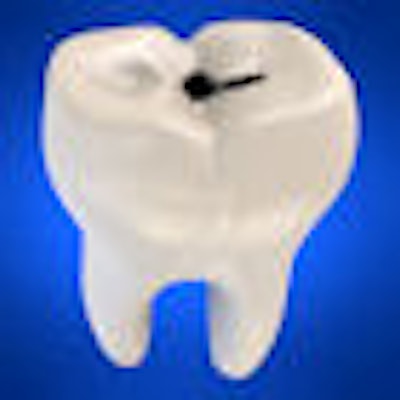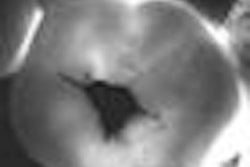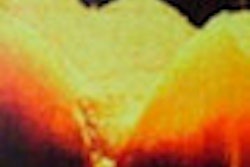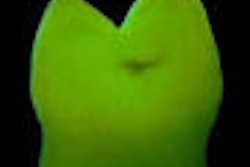
Commercially available fluorescence-based imaging devices can help monitor caries progression even in teeth that have been treated with a sealant, according to researchers from Indiana University School of Dentistry.
— Margherita Fontana, D.D.S., Ph.D.
They reported their findings at the recent International Association for Dental Research (IADR) meeting in Miami. Their study, which was funded by a National Institutes of Health grant, was prompted by the ADA's decision to update its sealant recommendations last year, said lead author Margherita Fontana, D.D.S., Ph.D. The Centers for Disease Control and Prevention is expected to follow suit this year, she added.
While clear evidence supports the use of sealants on noncavitated caries lesions in the pits and fissures of permanent teeth (Journal of Dental Research, February 2008, Vol. 87:2, pp. 169-174), some dentists still hesitate to use them out of concern they may inadvertently seal over existing caries, Dr. Fontana said.
Being able to monitor the development or progression of a caries lesion through the sealant could help alleviate those concerns, she noted. "There is a lot of interest in when to seal caries and when not to seal caries, so we wanted to look at available instruments to see if they could be used to look through certain sealants and do caries assessment clinically."
The study included 77 children with at least two permanent molars that were either sound or had occlusal caries lesions. They had their permanent molars brushed with water and examined using the Diagnodent (KaVo Dental) and quantitative light fluorescence (QLF) imaging devices and visual criteria (International Caries Detection and Assessment System [ICDAS]). The teeth were evaluated before and one month after sealant placement (Helioseal Clear Chroma, Ivoclar Vivodent).
According to the study findings, both Diagnodent and QLF were able to significantly distinguish between ICDAS severity scores before and after the sealant was applied. "Early stages of dental caries lesion severity can be assessed in vivo using ICDAS, QLF, or Diagnodent after Helioseal Clear Chroma placement," the researchers concluded.
Dr. Fontana is quick to note that while the study only looked at one type of sealant, the findings are a good starting point.
"This was a clinical trial focused on testing the instruments, with the aim of, in future studies, looking how to use these instruments to assess caries at different stages through various sealants," she said. "Many people believe they cannot use these instruments through sealant, which is true for opaque sealants and even some clear sealants. But we showed that the two instruments we looked at were capable of providing readings through this particular sealant."
Dr. Fontana's long-range goal, she added, is to test the hypothesis that sealing caries is an effective treatment strategy.
"These instruments enable you to look at changes over time with more detail than radiographs," she concluded.
Dr. Fontana and her colleagues are now preparing their findings for publication, including additional one-year follow-up data.
"The data we presented at IADR was baseline data," she noted.
Copyright © 2009 DrBicuspid.com



















